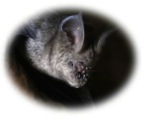Updated: 22/04/2024
Bat acoustic signals might seem rather simple. yet, there are individual differences. The background to these variations are studied in the Early View paper “Geographical variation in echolocation vocalizations of the Himalayan leaf-nosed bat: contribution of morphological variation and cultural drift” by Aiquing Lin and co-workers. below is their summary of the study:
Animals’ acoustic signals often vary geographically—but how and why? We studied the geographical variation in echolocation vocalizations of a widespread bat species Hipposideros armiger sampled from 17 localities in South China. We asked whether there was detectable population divergence in the vocalizations and whether the acoustic divergence was related to the variation in morphological (forearm length), climatic (mean annual temperature, mean annual relative humidity, and mean annual precipitable water), geographical (latitude, longitude, elevation, and geographical distance), or genetic (genetic distance and population genetic structure) factors. We found remarkable geographical variation in the peak frequency of echolocation pulses of H. armiger, which clustered into three groups: Eastern and Western China, Hainan, and Southern Yunnan. The acoustic divergence was significantly related to morphological differences and geographical distance, but not significantly related to climatic (after controlling for morphological distance) or genetic variation. We also found a correlation between population differences in morphology and climatic variation (mean annual temperature). Our results suggest the action of both indirect ecological selection and cultural drift promote divergence in echolocation vocalizations of individuals within geographically distributed populations.


